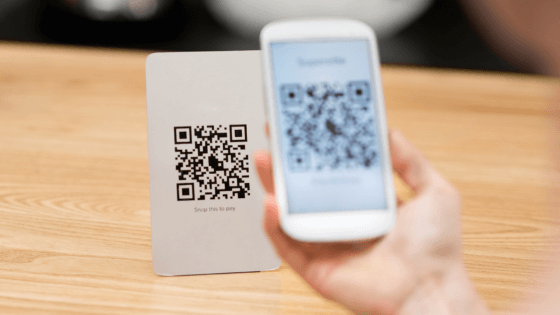Sometime in 2011, I was sitting in a conference room trying to figure out how use QR codes on marketing collateral and tchotchkes for a tradeshow. QR codes were a new marketing trend, but getting the technology to work proved challenging. You had to download an app, hold your phone just right, cock your head to one side, cross your fingers, and hope it worked.
And forget about data and analytics. We couldn’t figure out how to execute a QR code marketing strategy in any frictionless way. It wasn’t QR codes’ fault. Technology wasn’t there yet. We had dumbphones and slow internet.
Technology has finally caught up to support marketers’ biggest marketing ideas and our consumers’ needs. We now have high-speed internet. Our smartphones have built-in functionality to read QR codes and launch virtual experiences without friction or frustration. As a result, QR codes have become like mom jeans: What we thought was a bad fad has made an undeniable comeback. You can’t go anywhere without seeing them. And for good reason.
QR Codes Help Traditional and Digital Tactics Work Together
QR code technology bridges the gap between traditional and digital marketing, enabling local marketers to embrace modern strategies without abandoning the bread-and-butter tactics that have served them well. Traditional marketing can be easier to process, and digital marketing creates rich environments for promoting product engagement. QR codes connect the two by leveraging traditional marketing tactics to unlock digital experiences such as virtual demos, customer testimonials, and other immersive, in-depth product information. Their flexibility, simplicity, and infinite use cases make them ideal during this strange time when giving customers an experience remains important, but the pandemic limits how we interact with people.
A few examples of how QR codes help traditional and digital tactics work together include:
-
- QR codes are channel-agnostic
As long as users can see it and take a picture, it doesn’t matter what medium they’re presented on. QR codes work when displayed digitally, on TV, on out-of-home advertising, and on countless types of printed materials. - QR code scans can immediately connect the consumer to a salesperson
Traditional marketing usually includes a phone number to dial, and digital advertising usually has some sort of “contact us” page users can navigate to. QR codes reduce the necessary steps to get in touch in both instances. Users can scan a QR code and immediately launch a call, landing page, or map with directions to a store. - QR codes can replace events
Before the pandemic, events were a top traditional tactic for local marketers. In their absence, QR codes can launch virtual experiences and online engagements. - Measure the results of offline assets
Gauging the effectiveness of offline assets, such as printed marketing materials, can be tricky. With QR codes, marketers can gain visibility into how many consumers engaged with the advertisement or made a purchase
- QR codes are channel-agnostic
QR Codes Provide Hyper-Local Content With Real-Time Information
QR codes can be used to provide location-relevant content with real-time information, which is a huge advantage. Printed marketing materials can quickly go out of date and need to be replaced by more timely promotions. But physical marketing materials with QR codes on them can be made evergreen by switching out the digital content that the code displays when scanned. Not only does this nurture the customer through the path to purchase, it saves time and effort involved with creating and printing new marketing materials.
QR Codes Are Contactless, Convenient, and Measurable
Interacting with a QR code is contactless and accessible through most mobile devices. Because contactless methods of service are perceived as safer during the pandemic and our phones are usually within an arm’s reach, QR codes offer an ideal way to promote consumer engagement right now. It’s convenient for end-users and marketers alike. Plus, it’s measurable—marketers can gain insight into how users engage with offline content to help guide more informed marketing decisions in the future.
How It All Comes Together: QR Code Marketing Case Study
When the pandemic closed bars and restaurants, and people even flinched about touching products on grocery store shelves, beverage suppliers sought new, safe ways to engage consumers and continue to drive alcohol sales. QR codes were an ideal solution since they can be printed on beverage packaging, store displays, and POS tags, and are totally touch-free. Beverage suppliers were able to tailor the content displayed by a QR code according to the location, time of year, day of the week, and inventory levels available, and update the content in real-time to reflect the current environment. Plain printed materials cannot deliver that kind of flexibility or speed-to-market.
When consumers scanned the beverage suppliers’ QR codes, they were launched into virtual experiences with their favorite influencers or directed to view recipes, coupons, and in-depth product information that wouldn’t fit on the label. On top of it all, beverage suppliers could track usage and engagement to measure the success of the QR code strategy.
This time around, my team and I had no issues setting up QR code marketing campaigns like I experienced back in 2011. Technology and consumer needs have finally aligned to make QR codes relevant again. And the best part? Local marketers can do all of this from home while wearing their comfiest mom jeans. Time always proves certain things are timeless.




